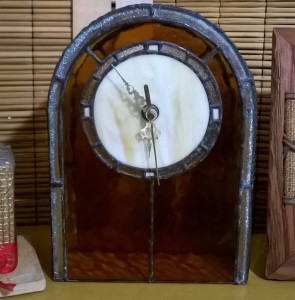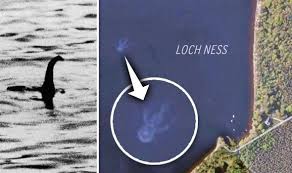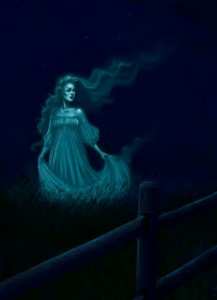A mermaid is a legendary aquatic creature with the head and upper body of a female human and the tail of a fish; many non-Latin languages distinguish the original siren (Siren, German Sirene) from the siren with fish tail. Mermaids appear in the folklore of many cultures worldwide, including the Near East, Europe, Africa, Asia and precolombine Cultures. The first stories appeared in ancient Assyria, in which the goddess Atargatis transformed herself into a mermaid out of s hame for accidentally killing her human lover. Mermaids are sometimes associated with perilous events such as floods, storms, shipwrecks and drownings. In other folk traditions (or sometimes within the same tradition), they can be benevolent or beneficent, bestowing boons or falling in love with humans.
hame for accidentally killing her human lover. Mermaids are sometimes associated with perilous events such as floods, storms, shipwrecks and drownings. In other folk traditions (or sometimes within the same tradition), they can be benevolent or beneficent, bestowing boons or falling in love with humans.
Hybrids of woman and bird
Although at first it was shown as hybrids of woman and bird with which the Egyptians symbolized Ba, later the Church, they became representatives of the voluptuousness and assimilated their songs with the attractiveness of the false doctrines. In the West, they became metamorphosed in pisciform beings from century IX, when the Liber Monstrorum began to spread.
In the context of Greek mythology, sirens are slightly diffuse creatures because of the remote and rich background of their origin, probably linked to the world of the dead. According to the original myths, they were beings with a bird’s body and a woman’s face or torso, which are unmistakably always distinguished by the fact of having a musical voice, prodigiously attractive and hypnotic
In pre-classical times they began to assimilate, but never fully, certain isolated aspects of other nymphs such as Naiads or Nereids: in particular, the more or less direct association with the liquid medium and the fatality of their attractiveness.
Naiads and nereids were lethal to men because of their aquatic nature, although they were usually beneficial and aided; On the other hand, the sirens acquired an evil character of monstrous hue, for the irresistible influence of their song led intentionally to perdition. The ships that approached their island ended up crashing against the rocks and they devoured the sailors, leaving the coast full of bones.
In the British Isles: Sirens were observed in British folklore as omens of bad luck. Mermaids could also swim in fresh water and reach the rivers and lakes and drown their victims, making them believe they were drowning people. Sometimes sirens could cure illnesses. Some sirens were described as large monsters up to 600 m
In China: In some ancient tales, sirens are a species whose tears become precious pearls. Mermaids can also weave a very valuable material that is not only light but also beautiful and transparent. Because of this, the fishermen always wanted to catch them, but the singing of the sirens made it difficult. In other Chinese legends, mermaids are wonderful creatures, skillful and versatile and it was badly seen that the fishermen wanted to capture them.
In the Iberian Peninsula: The siren stories are also very famous in the peninsula, there are a lot of stories about fish-women seducing the sailors, although in others, these nymphs are totally benevolent
The Neo-Taíno nations of the Caribbean identify a mermaid called Aycayia with attributes of the goddess Jagua and the hibiscus flower of the majagua tree Hibiscus tiliaceus. In modern Caribbean culture, there is a mermaid recognized as a Haitian vodou loa called La Sirene (lit. «the mermaid»), representing wealth, beauty and the orisha Yemaya.
The best-known example of mermaids in literature is probably Hans Christian Andersen’s fairy tale, The Little Mermaid, first published in 1837. In the original story, a young mermaid falls in love with a human prince whom she saves from drowning when his ship is wrecked in a storm. Although her grandmother tells her not to envy humans, who live much shorter lives than mermaids, and whose only consolation is an immortal soul, the mermaid chooses to risk her life in order to be with the prince. She trades her tongue and her beautiful voice to the sea-witch in exchange for a draught that will make her human and allow her to live on land. She will have to rely on her beauty and charm to win the prince’s love, as she will be entir<img class=»alignright size-medium
Catholicism and the Sirens:
The sirens were used as a symbol of the dangerous temptation embodied by women, regularly throughout the Christian art of medieval times; However, in the seventeenth century, some Jesuit writers began to assert their real existence, including Cornelius, who said of the woman, «her look is like that of the legendary basilisk, her voice as mermaid, which enchants and with her beauty Deprives of reason. » Antonio de Lorea and Atanasio Kircher argued that the sirens would have appeared aboard the ark of Noah. Others indicate that the sirens were sinners who somehow managed to survive the flood, but claim that God does not create human beings part and animal part.


 My passion is teaching English, and I love learning, too. There are three things I can’t live without: books, music and Art.
My passion is teaching English, and I love learning, too. There are three things I can’t live without: books, music and Art. ng with glass, it’s magical, every object you make with this technique is unique.
ng with glass, it’s magical, every object you make with this technique is unique.



